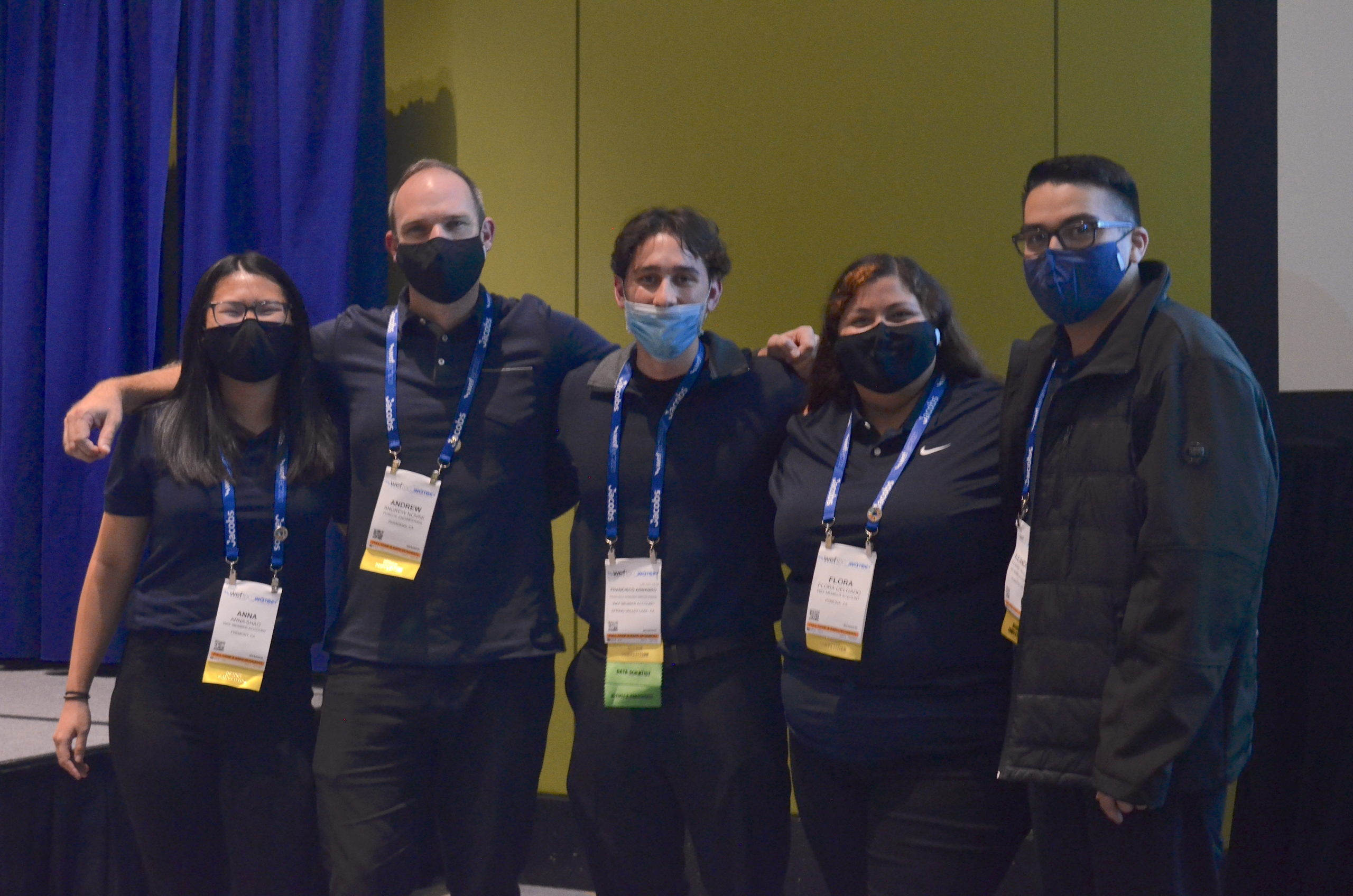
CWEA is proud to announce the California State Polytechnic University, Pomona (CPP) has taken first place in the WEFTEC Student Design Competition for their project titled, “A Community Approach to Puddingstone Watershed Restoration.” This is the first win for CWEA at WEFTEC in the Design Competition.
23 teams from 4 countries competed in the WEFTEC Connect 2021 Student Design Competition on October 17th, 2021 at McCormick Place, Chicago Illinois.
Team Members included Alex Berk, Ryan Porras, Eduardo Contreras, Christopher Rodriguez, Paz Alan De Nova, Francisco Santos Ponce, Jon Del Rosario, Amanda Saleeba, Flora Delgado, Anna Shao, Albert Hong, Jose Talavera, Marifel Janice Retuta, Ernesto Torres, Andrew Novak, Alex Vasquez and Faculty Advisor, Monica Palomo.
In May of 2021 CWEA held its third Student Design Competition lead by the SDC Chair, Board of Director and Past President, Debi Lewis. A panel of distinguished CWEA members served as judges assembled by CWEA Board of Director, Brian Peck from Carollo who selected the Cal Poly Pomona team to advance to the WEFTEC competition.
Puddingstone Reservoir is in Frank G Bonelli Regional Park, San Dimas, California. This park is managed by the Los Angeles County Department of Parks and Recreation and provides the community with recreational activities including fishing, swimming, and camping.
Puddingstone Reservoir experiences excessive pollutant load, low dissolved oxygen, and high organic matter leading to algal blooms and pungent odors during the summer. These concentrations pose a health risk to the patrons of Puddingstone Reservoir and its ecosystem. As a result, the Environmental Protection Agency (EPA) designates Puddingstone Reservoir as an impaired water body.
While implementing a treatment plant to reduce these concentrations is ideal, it is costly and infeasible for the highly trafficked park. Therefore, a cost-effective approach is proposed to restore the watershed’s natural processes. Strategic implementation of low impact development (LID) structures is proposed to reduce heavy metal contaminant load in sheet flow runoff.
Furthermore, a wetland system enhanced by low intensity chemical dosing closer to the outlet of Live Oak Wash treats nitrogen, phosphorus, and methyl mercury.
Utilizing HEC-RAS to model the watershed pre and post implementation, it was determined that contaminants would be decreased significantly, reducing Nitrogen (H) by 32%, Lead by 90%, and Cadmium by 13%. The Student Design Competition (SDC) begins at the Member Association (MA) level.
The benefits to participating in the WEF Student Design Competition include:
The WEF Student Design Competition hosts two different competitions at WEFTEC:
Both the Wastewater and Water Environment Design Competitions follow the same guidelines and scoring system.
Water Environment Category:
1st: California State Polytechnic University, Pomona (California Water Environment Association)
2nd: George Mason University (Virginia Water Environment Association)
3rd: University of South Florida (Florida Water Environment Association)
Wastewater Category:
1st: Clemson University (Water Environment Association of South Carolina)
2nd: Northeastern University (New England Water Environment Association)
3rd: North Carolina State University (North Carolina AWWA-WEA)
4th: City College of New York (New York Water Environment Association)
5th: Southern Methodist University (Water Environment Association of Texas)